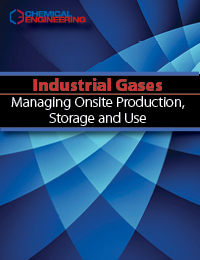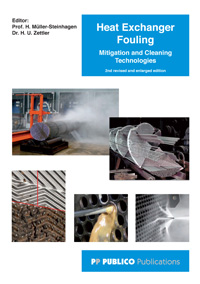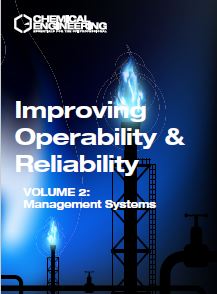Description
A variety of industrial gases — including nitrogen, oxygen, hydrogen, helium, argon and other noble gases — are either produced onsite or transported to chemical process industries (CPI) facilities, where they are stored and used onsite. Used in both gaseous and liquefied form, these gases can pose significant health and safety risks if not properly stored and handled by plant personnel.
This Chemical Engineering PDF guidebook provides a diverse collection of engineering articles related to the production and use of industrial gases, such as oxygen, nitrogen and hydrogen at chemical process industries (CPI) facilities.
The articles in this volume profile the various sourcing options for many industrial gases, including onsite generation of oxygen and nitrogen via cryogenic distillation, non-cryogenic processes based on adsorption or membrane separation and production of hydrogen via reforming, and delivery of industrial gases via pipeline, tanker or cylinder.
Also provided are good safety practices for the appropriate handling of cryogenic fluids and compressed gases, compressors, and engineering guidance for tank blanketing or inerting applications, a key use of nitrogen onsite. Here you will learn more about the economies of scale and capital-intensive engineering projects.
Delivered in a PDF format, 95 pages.
TABLE OF CONTENTS
New Horizons for Dividing Wall Columns
How to significantly expand the application window of DWCs, both as a new design to enhance potential benefits and as an energy saving retrofit option
Facts at Your Fingertips: Gas Hazard Definitions and Data
Facts at Your Fingertips: Liquefied- Industrial-Gas Safety
Improve Your Contingency Estimates for More Realistic Project Budgets
Reliable risk-analysis and contingency-estimation practices help to better manage costs in CPI projects of all sizes
Compressors: N2 Expands the Applicability of Dry Gas Seals
When the process gas is dirty or corrosive, nitrogen can be used to ensure trouble-free operation of the seal, but it requires special steps
Compressors for Specialized Applications
Follow this guidance to improve the selection, operation and safety of compressors that face challenging conditions
Prevent Combustible Dust Explosions with N2 Inerting
Targeted use of blanketing with inert gas offers an effective strategy for preventing combustible dust explosions in CPI facilities
Industrial Gas Applications
Discover technical solutions, hardware and supply options for a broad range of uses in fine and specialty chemicals production
Compressors: Pursuing Lowest Cost of Ownership
Proper specification, purchase, mechanical-run and shop performance testing, installation, operation and maintenance are all important
Managing Large Chemical Plant Startups
Prudent planning and scheduling during a project’s front end can lead to more expedient commissioning and startup activities
Technology Profile: Hydrogen Production from Natural Gas
Dust Explosions: Prevention & Protection
Understand what causes these disasters and then put these practical measures in place
Your Deliveries of Industrial
Save money and improve your plant’s efficiency by treating its gas supply holistically
Industrial Insulation Systems: Material Selection Factors
To provide the desired functions while being exposed to harsh environments, insulation material should be carefully selected and specified to meet the design goals
The Owner Role in Capital Projects
Avoid delays, cost overruns and more with significant owner involvement
Why Big Always Wins: Examining Economies of Scale
Origami teaches one of the fundamental tenets of chemical engineering
Temperature Effects for High-velocity Gas Flow
Guidelines are presented to better understand the temperature profiles of high-velocity gases




